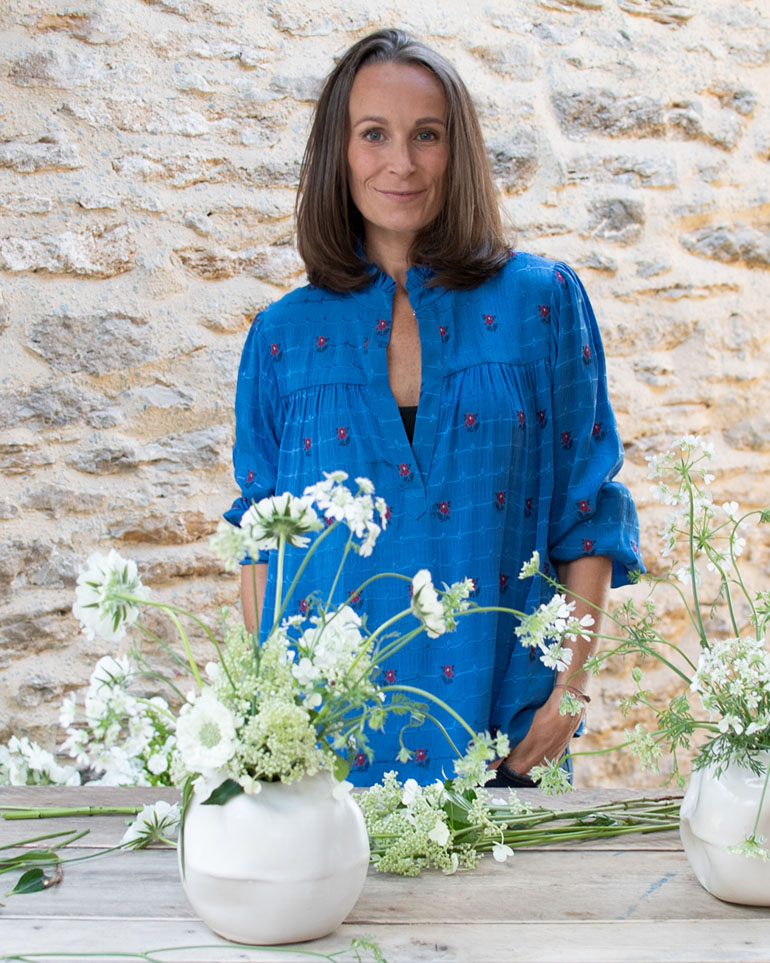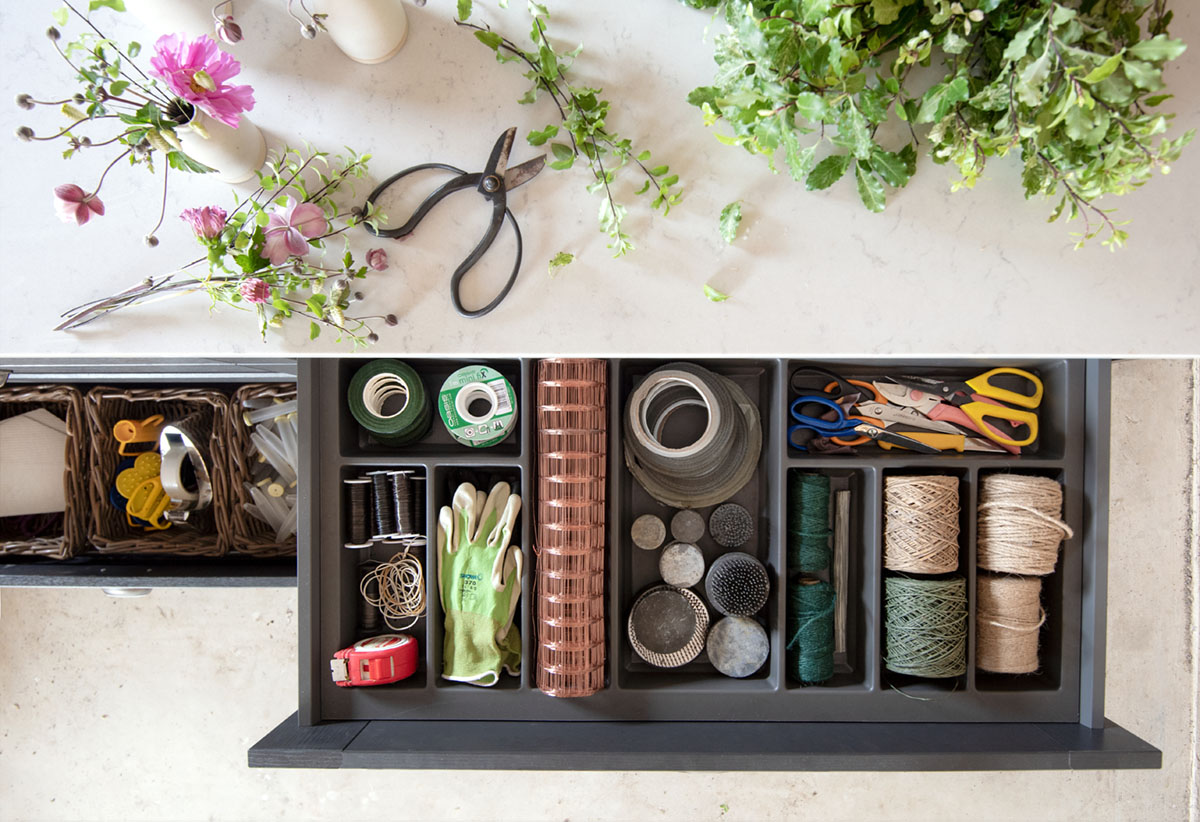
Flower: Your floral designs have garnered acclaim from some of the foremost authorities on style, and famously took the world stage at the 2018 royal wedding of the Duke and Duchess of Sussex. But let’s start at the beginning. Please tell us a bit about your history with flowers.
Philippa Craddock: I grew up on the East Coast of Scotland surrounded by sand dunes, open fields, and rough seas so flowers didn’t feature predominantly in my childhood. After university, I moved to London, married, and had my first child. I needed to work, but I also needed a creative outlet, so I launched a small plant gift company. I was often asked to supply bridal flowers, which was something I’d never attempted before. I gave it a try and instantly fell in love with the process of designing with flowers.
It amazes me that you are a self-taught given your eye and skill for composition, color, and texture. Are you trained in any kind of artistic medium?
I always appreciated art, but I was never formally trained and never truly found my medium until I discovered floral design.

British Vogue has lauded you as “the Queen of London florists.” Elizabeth Young, head of events for the Historic Royal Palaces, coined a more descriptive—and equally complimentary—moniker when she called you “the Audrey Hepburn of florists.” What is it about your style that echoes that of the iconic actress?
My designs are classically beautiful and look as though they’ve grown naturally into the architecture or landscape that surround them. I want all who walk into a room of my designs to feel welcomed—not overwhelmed—by the flowers.

Mission accomplished! The floral installations you created for the most recent royal wedding seemed to do just that!
Thank you! When the Duke and Duchess of Sussex asked me to do the floral design for their wedding at St. George’s Chapel, it was extremely important to them that the creations complement the architecture. They also wanted them to be wholly sustainable, so all of the greenery came from Great Windsor Park, and we avoided the use of floral foam. Afterwards, they requested to have the flowers repurposed into hand-tied bouquets that were distributed to women’s refuges and care homes. The flowers very much reflected the couple, who were gorgeous to work with.

What has been your most challenging commission so far?
That would be a monumental commission we did for The Dorchester London. We created and installed a full floral ceiling in the ballroom that needed to be safely secured to protect the guests and the delicate Art Deco chandeliers and interior spaces. We also designed a secret garden entrance that swept through five rooms and culminated in a huge pergola that became a dance floor later in the evening.
That’s quite an undertaking! What would be your “dream” commission?
This is not so much a dream commission as it is a dream. I would love to create a blank white canvas where I can be bold and test all of the new ideas and different methods that float in my head! I could then apply them for our clients’ commissions and Flower School Masterclasses.

Let’s talk about your Flower School Masterclasses—I understand that you’ll be introducing an online Floristry Fundamentals Masterclass on June 26! Why is teaching so important to you?
When I started out, I had to teach myself because I couldn’t find a flower school with either practical floral designs or business acumen. For generations, the floristry industry had been shrouded in secrecy making it difficult for newcomers to attain knowledge. I had to become very resourceful and determined in order to refine my skills over the years. In doing so, I would receive enquiries from flower enthusiasts all over the world looking to enhance their skills and from professional florists seeking technique support and business assistance.

My studio-based flower school could only host a limited number of students at a time so in 2018 we launched our first online courses and, within one year, established an online school. Within these courses, we host live Q&A sessions where I answer all sorts of questions openly and honestly. I have been there and experienced the struggles that so many face when starting out. I have learnt through failure and success. As a teacher, I hope to inspire, boost confidence, and help others set and achieve their own unique personal or professional goals. Being unique is essential, so I teach the methods and base points so that everyone can grow in their own authentic way.
For more from Philippa Craddock, visit philippacraddock.com or follow @philippacraddock on Instagram.
By Margaret Zainey Roux
